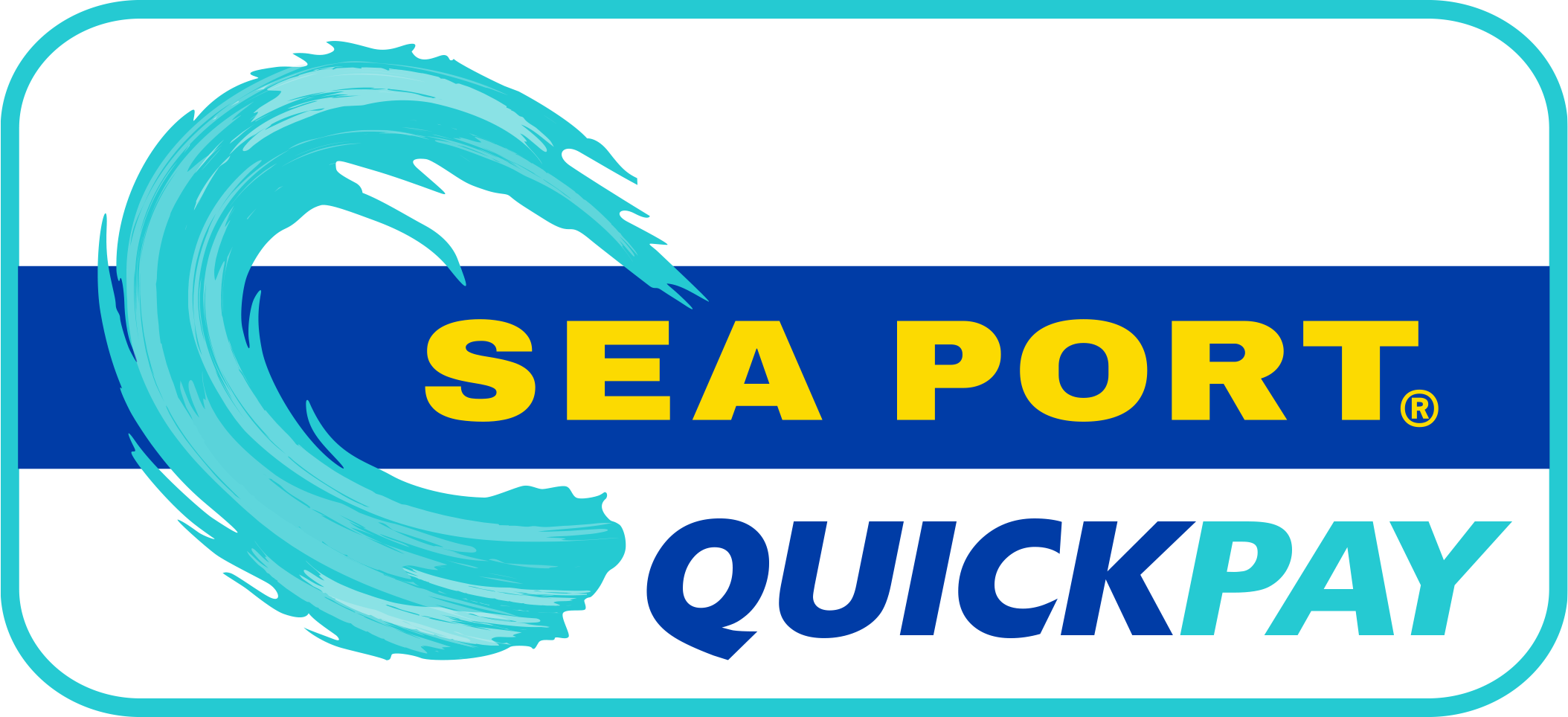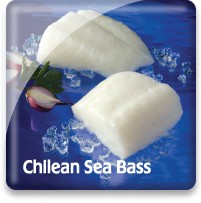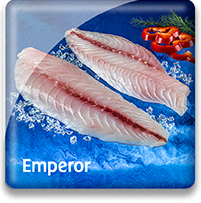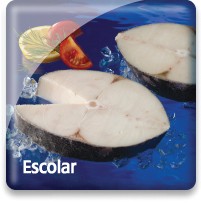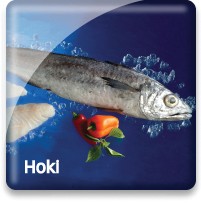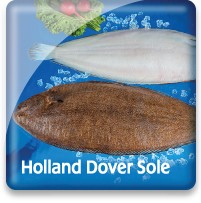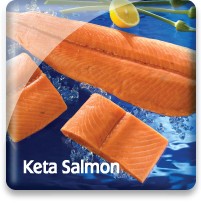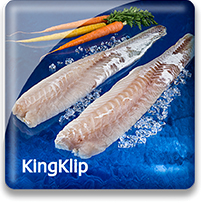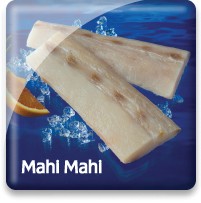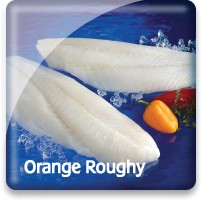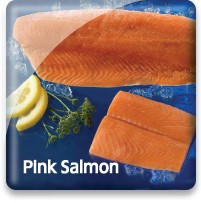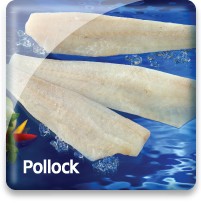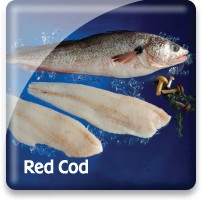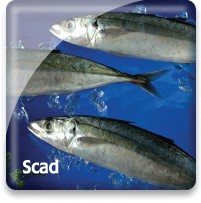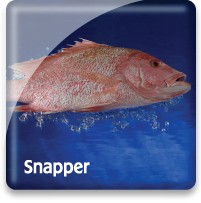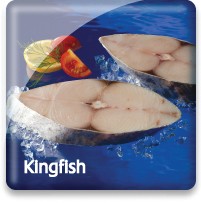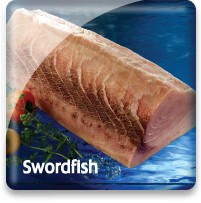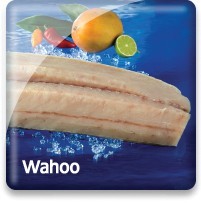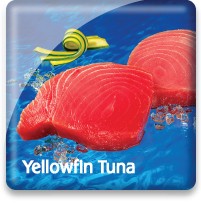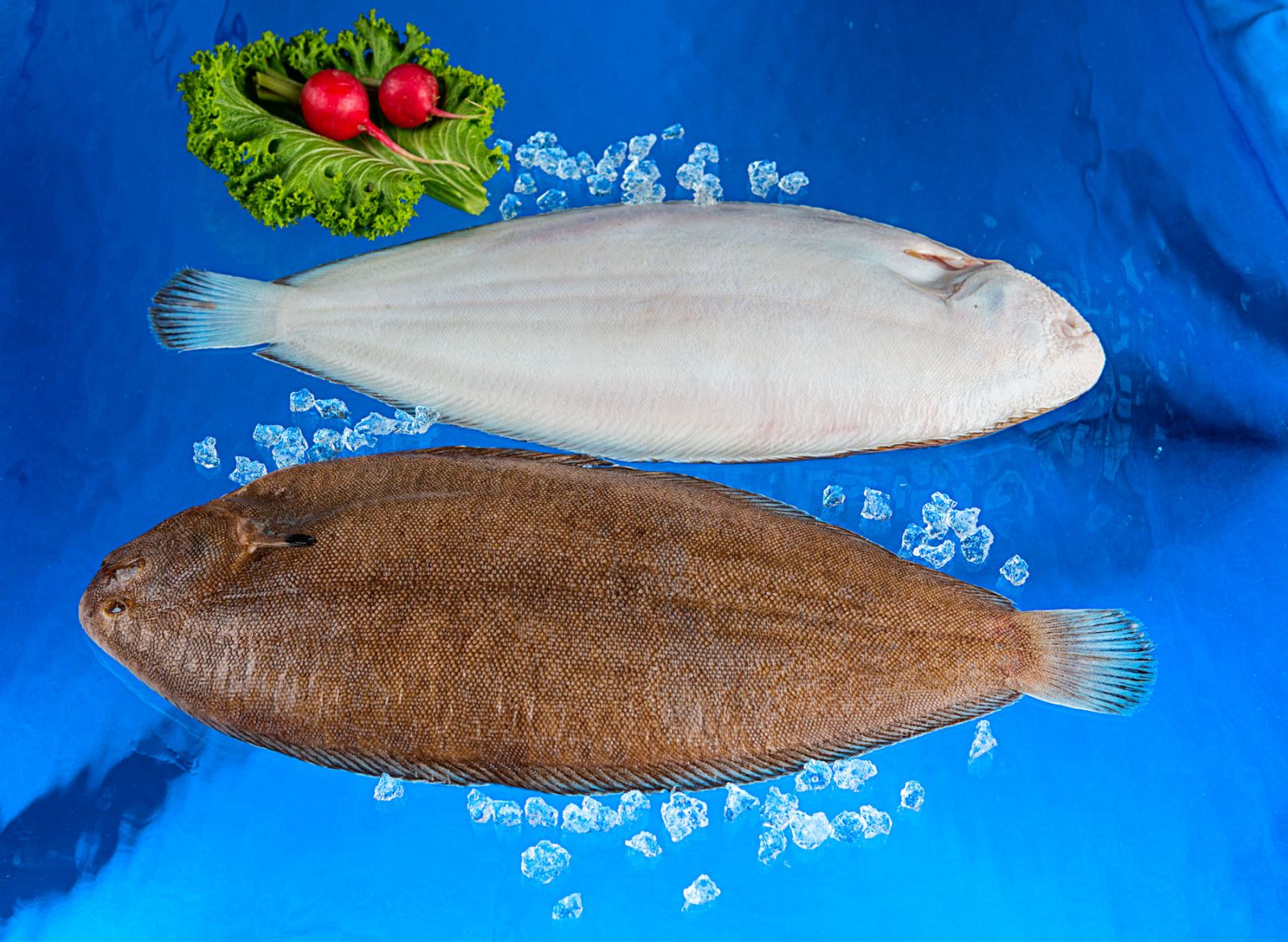
Holland Dover Sole

Market Name: Eating QualitiesThe Holland Dover Sole meat is white in color, medium-firm in texture, and processes a mild flavor. It can be prepared either steamed, fried, broiled, microwaved or baked and can be simply spiced with salt and pepper or combined with rich flavored sauces.
  .jpg) |
Description & CharacteristicsHolland Dover Sole is a culinarians’ delight! This fish is preferred by European (especially French!) chefs because the fillets are thin, firm and do not fall apart when rolled or stuffed. Holland Dover Sole is caught in the North Sea by trawlers. Historically, it is said that this fish gets its name from the town of Dover, on the English Channel, which had supplied this fish to the main London fish markets. They are marketed fresh and frozen and prepared either steamed, fried, broiled, microwaved or baked. The meat is white and firm with a mild sweet flavor that works beautifully with rich sauces. Holland Dover Sole is a long, flat fish, with a tough, dark top skin that should be peeled off before cooking. Usually solitary, Holland Dover Sole burrow into sandy and muddy bottoms. Juveniles are found in coastal bays and migrate to deeper waters at around 3 years of age. Adults feed on worms, mollusks and small crustaceans at night. The Holland Dover Sole (Solea solea) is in the sole family and is marketed primarily in the whole gutted form while the less expensive West Coast Dover Sole (Microstomus pacificus) is in the flounder family and is primarily marketed in the fillet form. These two fish should not be considered comparable in terms of either price or quality. The Holland Dover Sole is a very special luxury item that is considered to be the best of all soles.
The Holland Dover Sole is the world's most esteemed because of superior taste.
Other Resources |
Handling Instructions for Holland Dover Sole
Our whole gutted frozen Holland Dover Sole must be stored at or below 0°F (-18°C) and then thawed properly when ready to cook. The frozen shelf life is 18 months. Links to proper seafood handling instructions: NOAA - Fish Watch: Handling Seafood and A Consumer Guide to Safe Seafood Handling.
Thawing Holland Dover Sole
The whole gutted IQF Dover should be placed in a tight fitting plastic bag or covered container and placed under refrigeration between 33 and 39°F for 12-24 hours until thawed. The gut cavity and entire fish should be rinsed under cold water upon thawing.
Important Instructions for Holland Dover Sole
Once totally thawed and rinsed the fish should be cooked immediately for the best quality results. Fish not immediately consumed should be held under proper refrigeration and completely consumed within 1-2 days.
The Federal Food, Drug and Cosmetic Act now requires that all foods that are not raw agricultural commodities and that contain a major food allergen be labeled to clearly identify the name of the food source form which the allergen is derived. (21 CFR U.S.C. 343(w)(1)). The act defines eight foods, and any ingredients derived from these foods as major food allergens: Fish, Crustacean Shellfish, Milk, Eggs, Tree Nuts, Peanuts, and Wheat & Soybeans. The name of the food source that must be listed on the label for fish or crustacean shellfish must be the specific type of fish or crustacean shellfish. The market names of species of fish and crustacean shellfish should be used to identify the food source of these two major food allergens. If you intend to re-pack these seafood products, be sure the allergen is declared in either one of two ways:
1) Within the list of ingredients
or
2) In a separate “Contains” statement immediately after or adjacent to the list of ingredients.
Consult the Fish and Fishery Products Hazards and Controls Guidance, Fourth Edition, Chapter 19 for more detailed information on the labeling of food allergens.
Cooking Tips
Holland Dover Sole can be prepared using a wide variety of cooking methods. Links to cooking tips and recipes: Link to cooking tips and Recipes.
The Netherlands (Holland)
The Netherlands (often called Holland) is a small densely populated European country of seventeen million people with 800 miles of coastline on the North Sea. Thirty percent of its land mass is below sea level. Holland is a net exporter of seafood. Its fishing industry harvests plaice, sole, herring, mackerel, sardines, and shrimp. The Dutch aquaculture industry produces catfish, eel, tilapia, sturgeon, pikeperch, turbot, yellowtail, kingfish, mussels, oysters, clams, and seaweed. Holland is a leader in developing modern fishing and aquaculture methods and technologies.
Go Blue! Seafood Sustainability Spectrum*Click here for an explanation of our Sustainability Spectrum Sustainability AssessmentA robust Holland Dover Sole fishery in the North Sea off the coast of the Netherlands has existed for over fifty years. The Netherlands strictly enforces yearly quotas and fishing seasons. This helps prevent overfishing to protect their stocks. This fishery management scheme has resulted in a sustainable Holland Dover Sole fishery in the Netherlands. This fishery also abides by the European Union’s Common Fisheries Policy that addresses ecosystem protection, overfishing, the elimination of by-catch, and promoting socioeconomic benefits for the European seafood sector.
While there is a MSC certified fishery in the Netherlands, Sea Port currently does not source from it. However, the Netherlands stocks we do source are caught using the unique pulswing trawling method and are considered to be fished sustainably according to a 2013 SEAFISH publication.
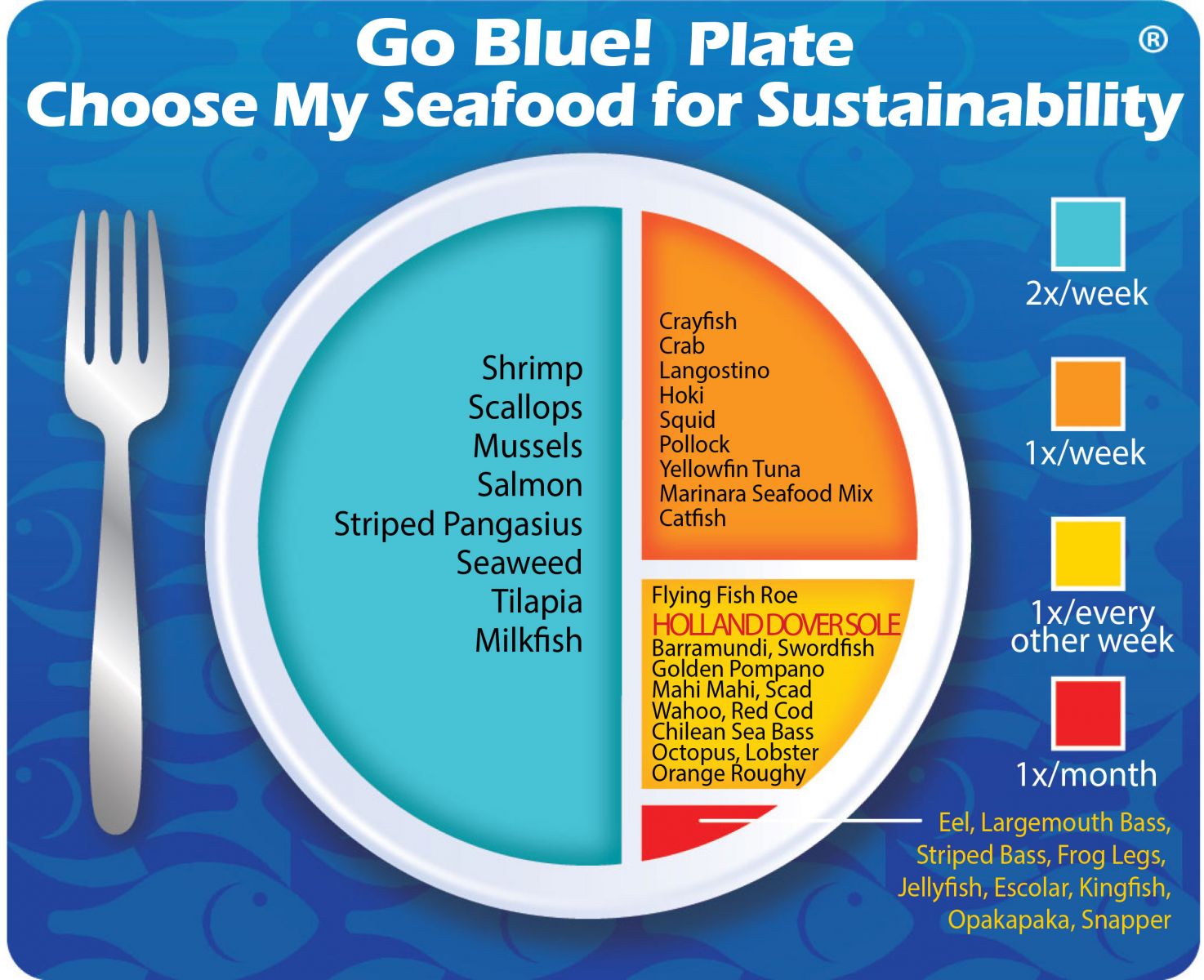
Environmental Impact: Low to ModerateThe pulswing trawling method is a recent advancement if fishing gear that addresses the issues of benthic habitat impacts and bycatch. The sandy bottoms that are the habitat for the Holland Dover Sole recover more quickly than other types of benthic habitats. This bottom trawl fishery has little impact on marine mammals, birds, and threatened & endangered species.
Sustainability Improvements NeededFurther reducing unwanted by-catch and increasing real-time biomass data collection can help to advance this high value fishery to becoming even more sustainably managed.
Actions that Sea Port is UndertakingSea Port supports this high-tech modern fishery and will enthusiastically encourage our customers to add this sustainably fished sole to their Go Blue! Plate. Sea Port believes that, in aggregate, choosing from a diverse variety of seafood is better for sustaining the world’s seafood resources and that European Dover Sole should be a part of this variety.
We created the sustainability assessments for each of our seafood items in order to reveal the existing and potential environmental impacts and risks that are associated with producing them for human consumption. This allowed us to establish the starting position for each of our seafood items along our progressive Go Blue! Seafood Sustainability Spectrum®. These assessments are only a single snapshot in time and because of this, we will continue to assess and update the critical sustainability needs associated with our supply sources and issue updates to the Go Blue! Seafood Sustainability Spectrum® as needed. There is a growing global awareness for the need to assure the sustainability of farmed and wild caught seafood and because of this; all around the world positive changes are rapidly occurring at all levels of the seafood supply chain. We will continue to spread this growing awareness and work with our many industry partners to improve the sustainability of all seafood, which we believe is the ideal protein of choice to feed an ever growing world population. Our Go Blue! Seafood Sustainability Spectrum® serves as our compass and yardstick as we strive to move all our products forward to becoming more sustainable. Please join us in this committed quest and Catch Our Wave® to sustainability by choosing a diverse variety of responsibly produced seafood as part of your diet.
|

